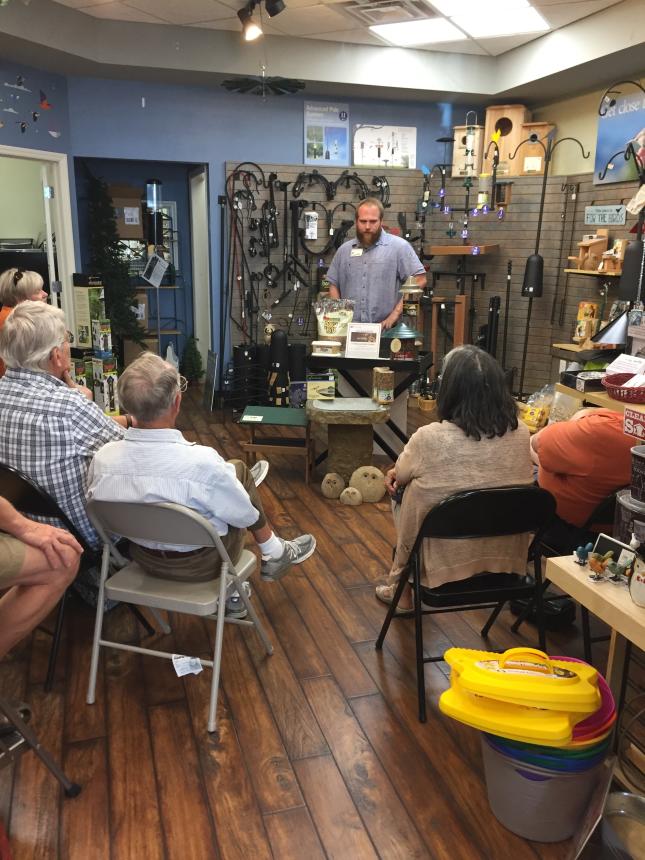Fall Backyard Bird Feeding Talk Recap
 Tips from Connor Fox on what to expect from backyard bird feeding during the fall!
Tips from Connor Fox on what to expect from backyard bird feeding during the fall!
-
Migration
- Migrants (hummingbirds, orioles, warblers, and other neotropical birds) that are here for the summer seek warmer climates in Central and South America
- More prolonged than spring migration, but birds are not as active
- Keep an eye out for Rose-breasted Grosbeaks at feeders as they migrate through
- Rarer birds that do not traditionally visit feeders may be attracted to moving water features
- Winter visitors will begin arriving
- White-crowned Sparrows
- White-throated Sparrows
- Dark-eyed Juncos
- Yellow-bellied Sapsuckers
- Brow Creepers
- Foraging guilds
- Interspecies flocks comprised of Chickadees, Titmice, Nuthatches, and Downy Woodpeckers looking for food
-
Feeding
- Good time to clean feeders
- Decreased feeder activity due to an abundance of natural food available
- Decrease in suet consumption due to diet requiring more proteins than fats
- Ensure a foundational feeder that contains a seed blend is filled half full despite slower feeding
- A foundational feeder contains a seed blend that is appealing to the majority of the local bids and should hold enough seed to only need filling about once a week
- Consistently having food in the feeder indicates to the birds that your feeder is a reliable source of food and will be beneficial for when feeder activity picks back up
- Some birds will start to cache seeds in anticipation for the colder months
- Blue Jays love to cache peanuts in the shell
- Goldfinches still frequent visitors at feeders
- Many juveniles can be seen at feeders as well as adults that are starting to molt from their highlighter yellow plumage into their olive winter coats
-
Other Considerations
- Leaving an area of your yard dedicated to a brush pile where birds can forage and take refuge from inclement weather or predators
- Now is a good time to clean nest boxes. Nesting is finished for the year and birds may seek shelter in boxes on cold nights
- You may observe an increase in hawk activity at your feeders
- Owls begin looking for nesting partners this time of year
- Concrete and ceramic bird baths should be covered or stored in the winter. A heated bird bath or bird bath heater in a plastic dish are best for offering water when temperatures are below freezing

